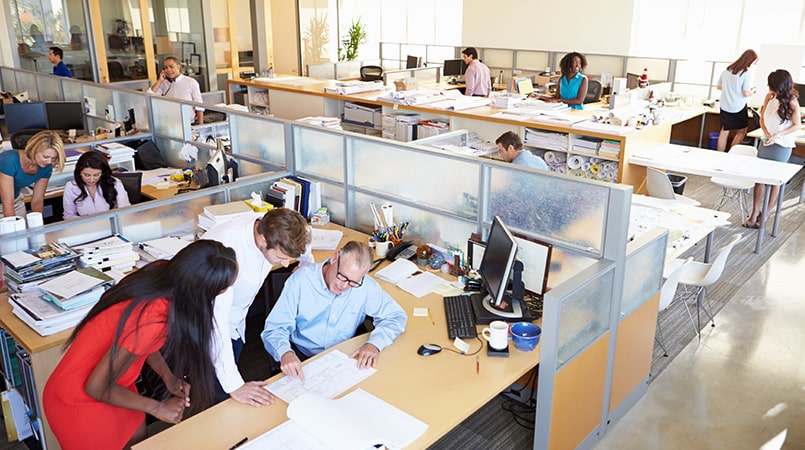I am surprised at the increasing number of presentations, discussions, and blog posts using 5S and ergonomics synonymously. As Lean programs begin to realize that good ergonomic design can reduce waste of motion, many people are making a leap assuming they are one in the same. The two are very distinct.
Occupational ergonomics (as defined by the National Institute of Occupational Safety and Health) is “the science of fitting workplace conditions and job demands to the capabilities of the working population. Ergonomics is an approach or solution to deal with a number of problems – among them are work-related musculoskeletal disorders.” Simply put: it is designing the job and tools to fit the people doing the work. The science part of fitting is based on using known limits and methods (anthropometry, cognitive limits, static strength, reaction time, etc.) to best design work, tools, job design and flow to fit the capabilities of people.
5S is a method for organizing a workplace to optimize flow. It’s sometimes referred to as a housekeeping methodology; however this characterization can be misleading because organizing a workplace goes beyond housekeeping (see Seiton/Straighten). The key target areas for improvement are workplace morale and efficiency. The assertion of 5S is, by assigning everything a location, time is not wasted by looking for things, and it is quickly obvious when something is missing from its designated location.
The 5S’s (in the original Japanese terms and English equivalents) are:
- Seiri/Sorting: Going through all tools, parts, and materials in the plant and work area and keeping only essential items. Everything else is stored or discarded.
- Seiton/Straighten or Set in Order: Focuses on efficiency. When translated to “Straighten or Set in Order”, it sounds more like sorting or sweeping, but the intent is to arrange the tools, equipment and parts in a manner that promotes work flow and maximize efficiency.
- Seiso/Sweeping: Systematic cleaning to keep the workplace clean as well as neat. Daily activity at the end of each shift, the work area is cleaned up and everything is restored to its place, making it easy to know what goes where and to know when everything is where it should be are essential here. The key point is a part of daily work – not an occasional activity initiated when things get too messy.
- Seiketsu/Standardizing. Standardized work practices or operating in a consistent and standardized fashion. Everyone knows exactly what his or her responsibilities are to keep above 3S’s.
- Shtisuke/Sustaining: Refers to maintaining and reviewing standards. Once the previous 4 S’s have been established they become the new way to operate.
5S advocates believe the benefits of this methodology come from deciding what should be kept, where it should be kept, and how it should be stored. This decision making process usually comes from a dialog about standardization which builds a clear understanding, between employees, of how work should be done. It also instills ownership of the process in each employee.
5S is a valuable tool for those responsible for improving workplace conditions and this tool becomes even more effective when ergonomic principles are employed BUT it is only one tool and should not be relied upon to solve all ergonomic issues.
Just as you can’t sterilize a hospital room with a broom, the work environment isn’t free from ergonmic risk after 5S.
